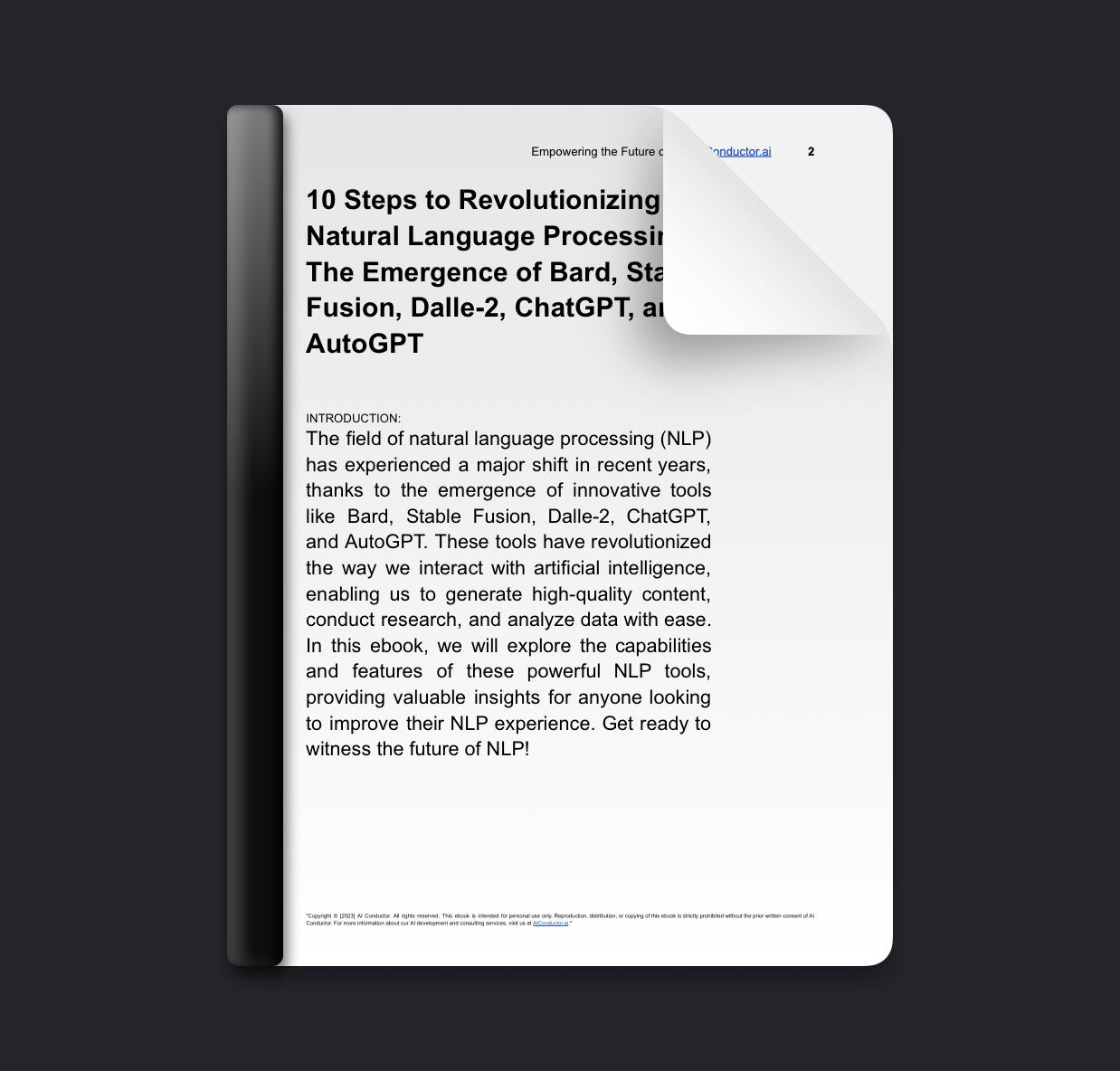We asked:
What risks are associated with the widespread use of ChatGPT technology, and how can we ensure that it is used responsibly?
The Gist:
This article examines the development of ChatGPT, a natural language processing (NLP) system that is becoming increasingly popular in conversational applications. The article outlines the history of ChatGPT, from its beginnings as a research project to its current widespread use in a variety of applications. The article explains how ChatGPT works, and how it has been improved upon over time. It also discusses the implications of ChatGPT's use, including potential privacy and ethical concerns. The article concludes by noting that ChatGPT's success is indicative of the progress of NLP technology, and that it has the potential to revolutionize the way we interact with machines.

Decoded:
In recent years, the Chatbot industry has grown rapidly and is seen as one of the most valuable elements in artificial intelligence (AI). From customer service and medical diagnosis to helping with e-commerce marketing, AI-based chatbots are immensely popular. One chatbot particularly gaining traction is the GPT-based chatbot.
GPT, which stands for Generative Pre-trained Transformer, is a deep-learning AI architecture. It was first proposed by Google researchers in the paper “Attention Is All You Need” in 2017. The paper discussed the importance of attention in natural language processing (NLP) models and proposed a novel way of positioning a pre-trained Transformer in the form of GPT.
The GPT chatbot has since become an increasingly popular tool in the NLP industry. The chatbot offers an automated reply to user queries, with the answers being generated from its significant knowledge base. It leverages the massive amount of data fed into the GPT model and provides effective solutions to its users.
Aside from its ability to generate answers to questions quickly, GPTs have the unique advantage of being able to handle languages that humans are not familiar with. This has been seen to be of great use with industries such as customer service and medical diagnosis. GPTs can take input from customers and respond with a natural language response which is more effective than a basic key-word search query from a human.
A GPT-based chatbot has the capability to analyze questions and provide answers in different languages and dialects. It understands the nuances of each language and can pick up nuances of the customer's query that might have been missed by a human. This makes it perfect for customer service roles.
One of the advantages of GPT chatbots is its scalability. The model can be trained to answer different sorts of queries, whether short or long, with ease and accuracy. This makes it perfect for customer service roles.
GPT-based chatbots are taking customer service to the next level, making customer service more efficient and personal. They're efficient and can scale to customers' needs, providing smarter and more accurate answers with greater speed and accuracy.
GPT-based chatbots are becoming more and more popular and are clearly stated to shape the future of artificial intelligence. With their capabilities and scalability, GPTs have a lot to offer and will take customer service to the next level.
GPT, which stands for Generative Pre-trained Transformer, is a deep-learning AI architecture. It was first proposed by Google researchers in the paper “Attention Is All You Need” in 2017. The paper discussed the importance of attention in natural language processing (NLP) models and proposed a novel way of positioning a pre-trained Transformer in the form of GPT.
The GPT chatbot has since become an increasingly popular tool in the NLP industry. The chatbot offers an automated reply to user queries, with the answers being generated from its significant knowledge base. It leverages the massive amount of data fed into the GPT model and provides effective solutions to its users.
Aside from its ability to generate answers to questions quickly, GPTs have the unique advantage of being able to handle languages that humans are not familiar with. This has been seen to be of great use with industries such as customer service and medical diagnosis. GPTs can take input from customers and respond with a natural language response which is more effective than a basic key-word search query from a human.
A GPT-based chatbot has the capability to analyze questions and provide answers in different languages and dialects. It understands the nuances of each language and can pick up nuances of the customer's query that might have been missed by a human. This makes it perfect for customer service roles.
One of the advantages of GPT chatbots is its scalability. The model can be trained to answer different sorts of queries, whether short or long, with ease and accuracy. This makes it perfect for customer service roles.
GPT-based chatbots are taking customer service to the next level, making customer service more efficient and personal. They're efficient and can scale to customers' needs, providing smarter and more accurate answers with greater speed and accuracy.
GPT-based chatbots are becoming more and more popular and are clearly stated to shape the future of artificial intelligence. With their capabilities and scalability, GPTs have a lot to offer and will take customer service to the next level.

Essential Insights:
Three-Word Highlights
Chatbot, AI, GPT-3
Winners & Losers:
Pros:
1. ChatGPT has made it easier for people to have natural conversations with AI systems.
2. It has enabled AI systems to become more intelligent and able to understand complex conversations.
3. It has allowed AI systems to become more efficient and able to process large amounts of data quickly.
Cons:
1. ChatGPT can be difficult to understand and interpret, making it difficult to use in certain applications.
2. It can be expensive to implement and maintain, depending on the complexity of the AI system.
3. ChatGPT can be prone to errors and mistakes, which can lead to incorrect or inappropriate responses from the AI system.
Bottom Line:
The bottom line is that ChatGPT is a powerful new artificial intelligence system that has the potential to revolutionize the way we interact with machines. It's based on natural language processing and can generate conversations that sound like they're coming from a real person. It's already being used in a variety of applications, from customer service to education, and is likely to become even more ubiquitous in the near future.
Ref.





